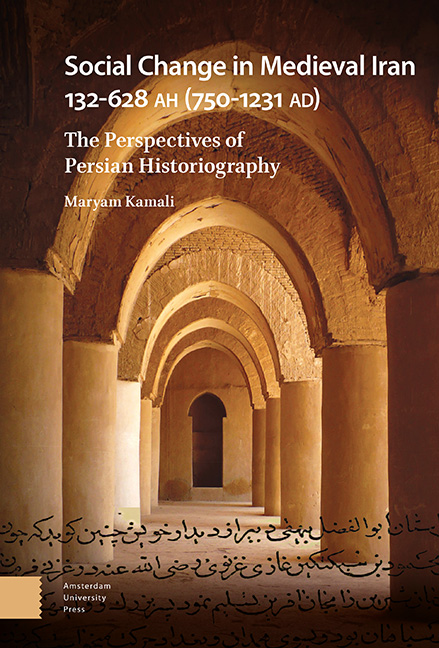Book contents
8 - The Buyid Dynasty: A Turning Point in Iran’s Social Change
Published online by Cambridge University Press: 28 December 2023
Summary
Abstract
The combination of the strength of Iranian military men and the religious legitimacy of the ʿAlawites provided the necessary push to enable the Buyids to enter the power structure in Iran. Aware of the conflicts between the Sunni ʿAbbāsids and the Shiʿite Fatimids, the Buyids shifted social change from Iran to Baghdad by conquering Baghdad. This social change brought together Iranian and Shiʿite agents and minimized the ʿAbbāsids’ share of power. The Buyids adopted a tolerant policy toward other sects and religions. Their dependence on the Deylami army forced them to reproduce the eqtāʿ (land grant) system in order to pay the solders. In the end, the creation of a split between the Deylami soldiers and the Buyid amirs led to the decline of the Buyid dynasty.
Keywords: Buyid dynasty, Deylamis, Shiʿites, eqtāʿ
The rise of the Buyids at a particular point in Iran's history gave the structure of this government a great deal of potential for social change. The rule of the Buyids was shaped during the time that the ʿAbbāsid Caliphate had changed from being a dominant structure in the Islamic world to being a limited power in Baghdad and in the surrounding towns. Only a few local dynasties in Iran, including the Sāmānids, still valued the caliph's mandate and based their structure's legitimacy on the caliph's approval. Amir al-ʾOmarā of Baghdad, who was of Turkish descent, played a crucial role in the caliph's death and life as the most remarkable figure in the Islamic world. At the same time, the rise of local dynasties, including the Ziyārids, was shaped outside the caliphate's framework. Even their founders thought of dominating Baghdad, which posed a great challenge to the ʿAbbāsid Caliphate. This was because the ʿAbbāsid caliph had the Fatimid Caliphate as its main rival, which, unlike many local dynasties, was not content with the established division of power with the ʿAbbāsid caliph. The Fatimids defined a new legitimacy that endangered the resources of the ʿAbbāsid power. The Buyids, whose power was derived from the military might of the Deylamites, succeeded in establishing a government in Iran using historical conditions, but their social changes influenced the course of post-Buyid dynasties, namely the Saljuqs.
- Type
- Chapter
- Information
- Social Change in Medieval Iran 132-628 AH (750-1231 AD)The Perspectives of Persian Historiography, pp. 151 - 170Publisher: Amsterdam University PressPrint publication year: 2023

